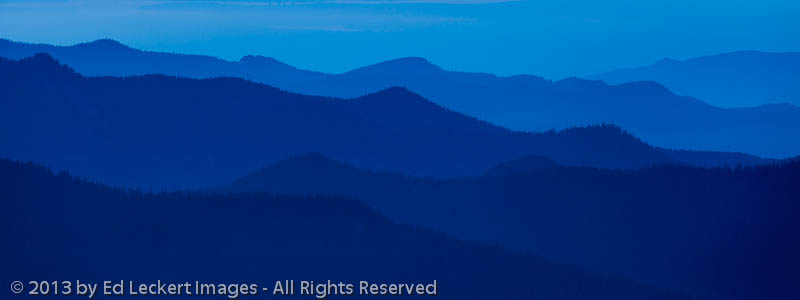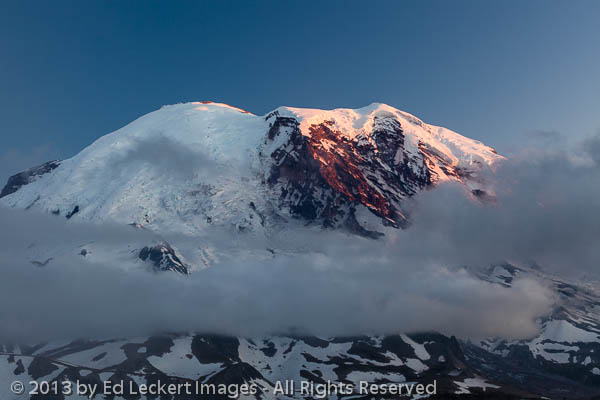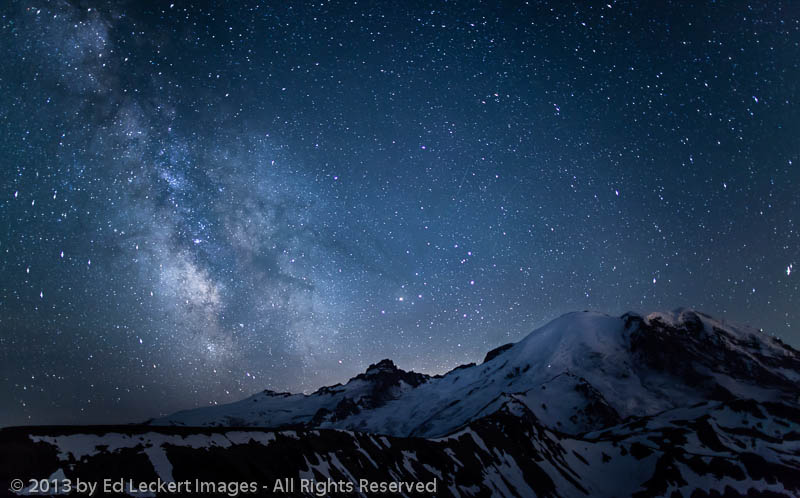


It was Galen Rowell I was thinking about as I drove down to Mount Rainier National Park last Sunday to photograph the Milky Way – under overcast skies. This would either be a complete waste of time and gasoline, or if the forecast for “Partly Cloudy” later that night went the way I hoped, a great night for photography. Obviously I was betting on the latter.
Galen Rowell, for those of you who don’t know, was a passionate climber, photographer, and author. Galen was heavily influenced by Ansel Adams, and I find great inspiration in both Ansel and Galen’s work. I’ve read all of their books, and one very important lesson that they both teach is that to get great images you need to be willing to get out there when conditions are less than ideal. Many of Galen’s images were captured when he took a bet on bad weather, sometimes really bad weather, and won. You just never know when conditions are going to clear, and when they do, it is often with spectacular results.
So with this in mind, I headed toward Mount Rainier. Why this particular weekend? Well, tonight there would be a new moon, and the darkest conditions possible are necessary for Milky Way photographs because it is so dim. And why Mount Rainier? I thought the white snow on the mountain would get just enough illumination from the stars and the light pollution from Seattle to make a nice earthbound foreground object. So with the “possibility” of somewhat clear skies by midnight, I kept on driving under the gloomy skies.
I parked the car and headed up the Mount Fremont Lookout Trail with my gear. This trail would give me just the elevation I needed and a clear view of Mount Rainier from the north. The Milky Way would then pass to the south from left to right behind the mountain during the night. I would have all night to wait for the clouds to clear, if necessary. In the meantime I could photograph the sunset light on the mountain as well as to the north toward Canada. The Mount Fremont Lookout is located in a truly spectacular location!
As the cloud cover was just clearing and I was photographing the sunset, I heard the unmistakable sound of a Chinook helicopter high up on the mountain. Given the time of day, this was not a good thing – it could only mean a rescue in progress. I had not brought a really long lens, so I didn’t attempt to record the rescue – I simply continued taking sunset images of the mountain.  However, the rescue was occurring within the frame of my images, and so if I crop them enough, the helicopter, two climbing rangers, and the victim are actually visible.
However, the rescue was occurring within the frame of my images, and so if I crop them enough, the helicopter, two climbing rangers, and the victim are actually visible.
The clouds continued to dissipate, so I positioned myself for the evening’s work and waited for darkness. The stars really began to come out around 10 PM, but it wasn’t until about 11 PM that the sky was dark enough to really see the Milky Way. I continued shooting until about 12:30, when I decided I had taken enough variations of images that I ought to have something I could use. Did I mention I had to show up at work the next morning? No? Well, I did!
 I got back to the car about 1:30 in the morning, and back to my home in Issaquah about 3:30, plenty of time to sleep before the alarm went off! Was it worth it? Well, I don’t know for sure, but I think Galen would have thought so!
I got back to the car about 1:30 in the morning, and back to my home in Issaquah about 3:30, plenty of time to sleep before the alarm went off! Was it worth it? Well, I don’t know for sure, but I think Galen would have thought so!

Beautiful shots of the Milky Way, Ed! I love these….can’t wait to see them prominently displayed somewhere. My home? Hmmmm….perhaps! See you later.
Thanks, Lorraine! See you soon!
Okay, Eddie, this is just spectacular!!! Will you take the THREE of us with you some time?
Well, Margaret, you need to get up here first! And bring your hiking boots!